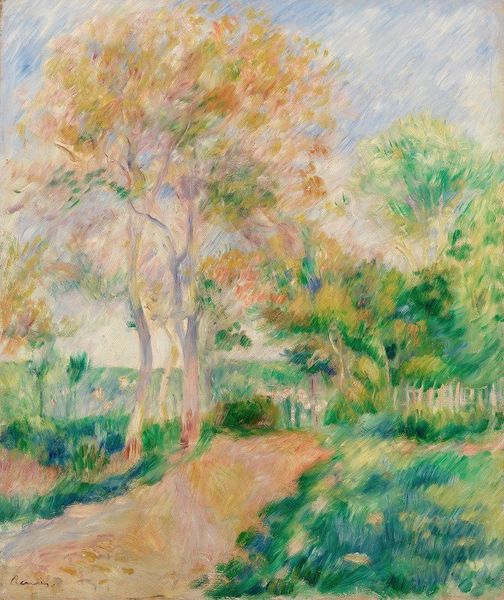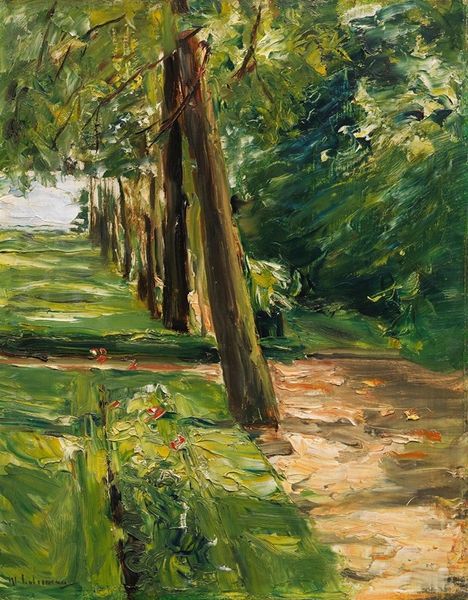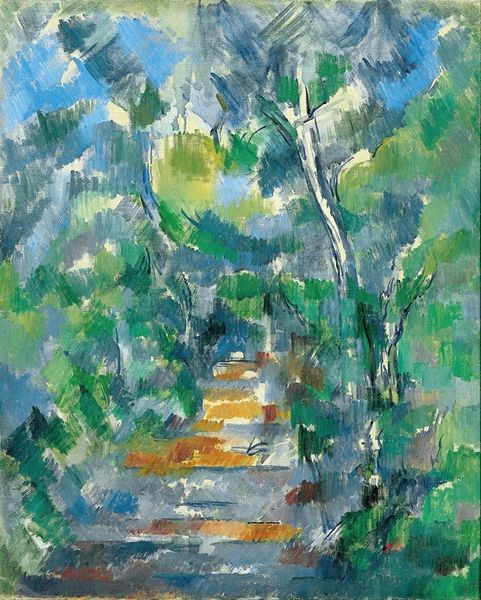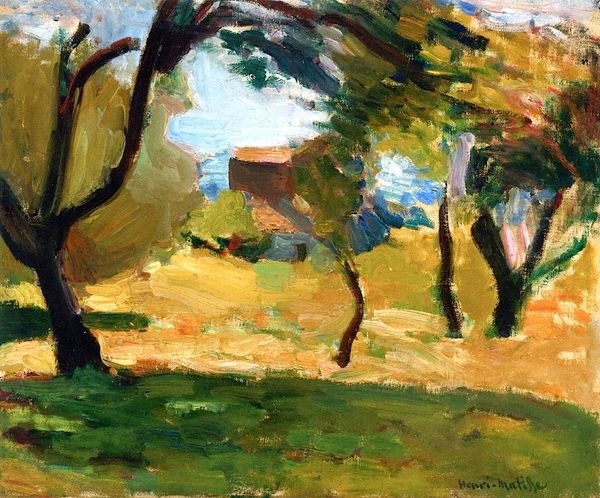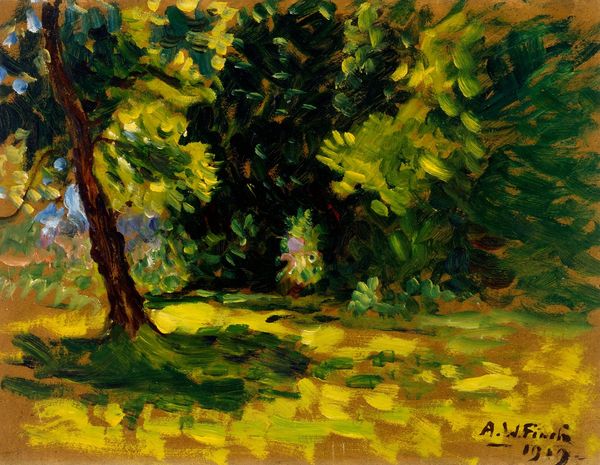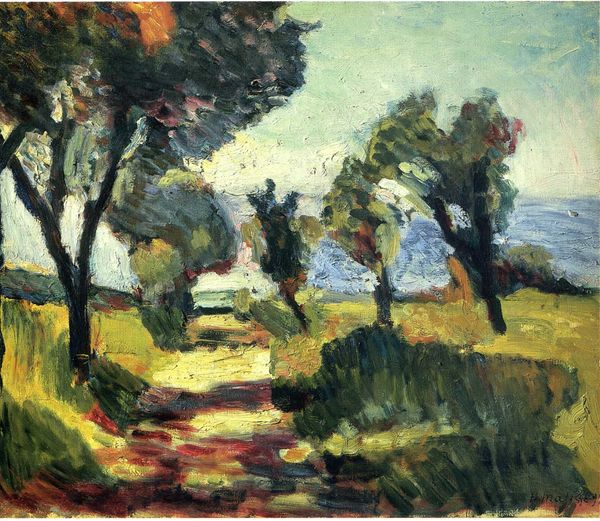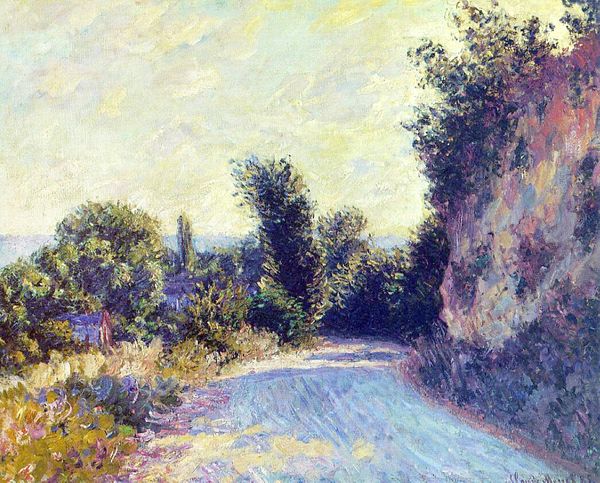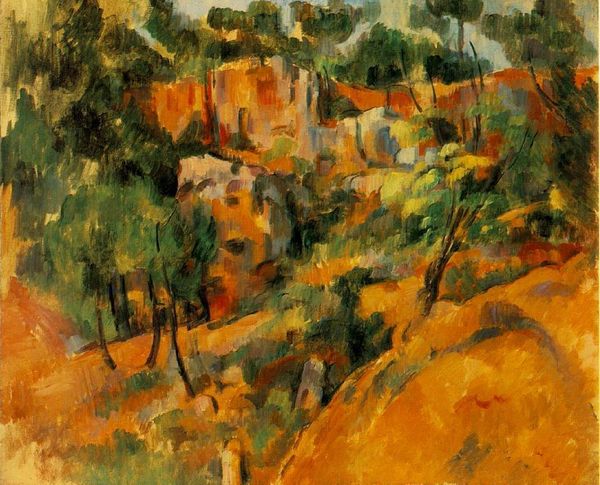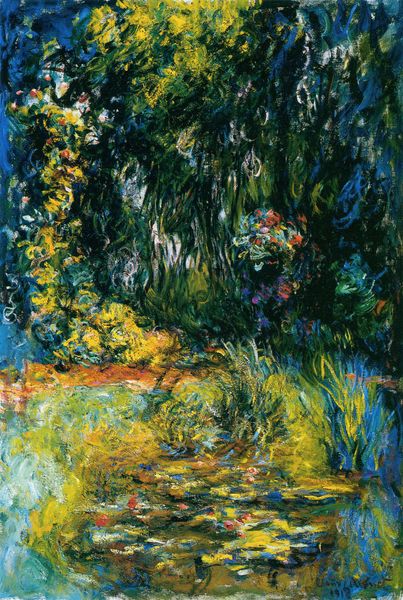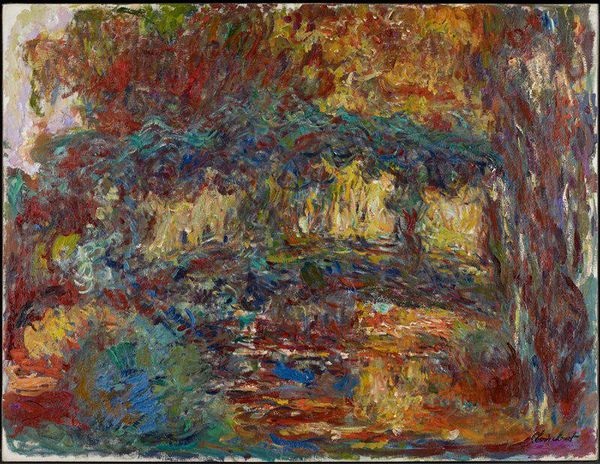
Copyright: Public domain
Curator: Renoir’s “Landscape Near Varengeville,” painted in 1885, presents a seemingly idyllic natural setting, capturing a pathway enveloped by lush vegetation under a dappled sky. Editor: Immediately, I’m struck by the sheer vitality of the color and brushwork. It feels so immediate, almost like a raw sensory experience rendered in oil. The impasto is incredibly thick, creating a textured surface. Curator: This work comes from a period when Renoir was moving away from pure Impressionism. It’s a transitional piece that reflects his concerns with form and structure—elements some believed the movement had previously neglected. This painting engages with both impressionistic spontaneity and a more structured vision that acknowledges the inherent social inequities that come from idealizing landscape while ignoring working classes’ interactions with land, especially those living adjacent to locations where these paintings were rendered in “plein air”. Editor: Precisely! Note how the path leads the eye, dividing the composition while simultaneously binding it. The path, itself, is defined by juxtapositions. The shadows contrast sharply with sunlight. It almost verges on abstraction in certain areas, but a solid structural grid underpins all. What sociopolitical commentary are you implying? Curator: This invites a deeper consideration of Renoir's artistic and personal privileges and its inherent tension within the Post-Impressionistic lens through which he creates meaning. Renoir’s engagement with Varengeville reflects shifting rural socioeconomics and anxieties about encroaching industrial modernity affecting laborers—elements somewhat absent or romanticized through the impressionistic style but not fully articulated. Editor: Ah, a very post-structural reading of the absences. But I maintain, even without direct representational markers, the energy—the materiality itself—holds its own as an aesthetic expression. To return to formalism for a moment: observe how the composition directs our gaze. The tension between light and shadow shapes the way viewers process the journey in which Renoir takes them. Curator: Agreed, the pathway undeniably engages us viscerally and metaphorically. But it can also highlight class imbalances, especially at a time that the artist may not have been consciously taking them into consideration, when landscapes often whitewashed labor and promoted escapism for upper classes, even during brief moments such as rendering a single landscape en plein air. Editor: I concede your point; engaging context provides valuable tools. The energy transcends any potential disconnect between its historical realities and aesthetic choices. Curator: Exactly. Nuanced dialogues that acknowledge artistic intention, alongside historical context, promote equitable conversations around art and life, thus creating broader understandings.
Comments
No comments
Be the first to comment and join the conversation on the ultimate creative platform.
